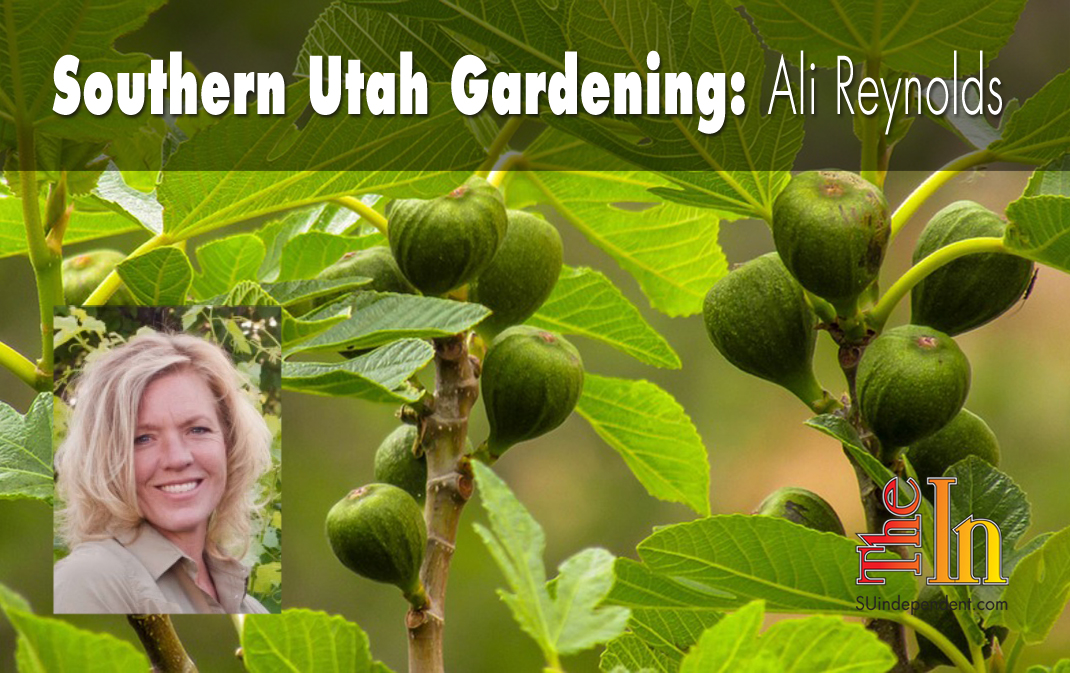 Southern Utah Gardening: Growing figs
Southern Utah Gardening: Growing figs
If you are looking to growing an unusual fruit crop that is nearly trouble free, consider growing figs. These trees will grow well unprotected in Zones 8–10. In colder areas, choose hardier cultivars or give your fig trees winter protection such as planting them on the south side of a house to be better protected from cold north winds and benefit from the sunlight year round.
There are more than 200 fig cultivars grown in North America with a broad range of fruit shapes and colors. It’s important to select a cultivar adapted to your area climate. I have tried many varieties. Some did not adapt to our growing climate. Cold winters froze some completely while others just didn’t taste very good. Some of my favorites that I grow with success are Improved Brown Turkey, Black Mission, Celeste, Peters Honey, Kadota, and Desert King. To be honest, I couldn’t pick one of these out to be my favorite. They all have excellent qualities. Celeste and Peters Honey are smaller than the rest but have what I would call a perfect honey fig taste. Improved Brown Turkey has a smoother skin than the original brown turkey. Desert King is a huge greenish-yellow skin with a beautiful pink flesh. Black Mission is common for our area but always a good producer and very versatile.
When planting my first fig tree, I had a fig-grower friend who instructed me in the “proper” method of planting figs. He instructed that I dig a large hole, deep enough that I should pack the bottom with composted manure and wide enough that the tree’s abundant root system could spread like octopus tentacles. Cover the roots with good soil and tamp, then water, water, water.
He also suggested that I spread a one-inch layer of pulverized agriculture lime around the base of the tree. It seemed like a lot of lime, so I questioned the alkalinity it might add to our already alkaline soil, but he reminded me that figs in Italy grew best along the base of volcanoes. I have to admit that I avoid lime except when it come to growing figs. They seem to love it, and it works perfectly. During the growing season, mulch trees with compost, and apply foliar sprays of seaweed extract once a month during the growing season.
Early spring, I remove the suckers that form at the base of the tree. Figs look great with multi-trunks, but four or five is more than enough. Otherwise, figs do not ripen as well, and too many branches make it hard to harvest. Cut out any crossing branches as well.
Each spring, I make applications of lime and compost. Literally, this is all I do.
Remarkably, I have never had any insect infestation. That says a lot for figs! It seems like everything in southern Utah gets some kind of insect issue sometime during its life cycle.
In warm climates like ours, you can get two harvests: once in June and again in late summer. On a rare occasions, you may have a late third harvest in late October, but this I have only seen this once here in southern Utah. Make sure you know the color of your fig’s fruit when it’s ripe. Some figs turn brown when ripe while others are gold or even green. Check trees daily for ripe fruit in season. Ripe fruits are soft to the touch; skin may begin to split. I may suggest that when picking figs, you may want to wear a long-sleeve shirt, because fig trees can irritate bare skin and cause you to itch.
Figs will keep up to one week in the refrigerator but spoil easily. Cook figs by simmering them with a dash of lemon and honey for about 20 minutes, mashing them as they cook. Then purée in a food processor, blender, or food mill. The purée freezes well and makes an excellent cookie filling, sauce for ice cream or poached pears, or spread for toast. You can also dry figs in a food dehydrator for nutritious snacks.
Articles related to “Southern Utah Gardening: Growing figs”
Southern Utah Gardening: Attracting beneficial insects to the garden
Southern Utah Gardening: Growing strawberries in home gardens




I have had a lemon and lime tree in containers over the summer and just purchased a orange tree, all are about 18 inches tall. I would like to plant them now and protect them with small lights, burlap, etc. Many people say leave in pot or transplant into larger pot for the winter and plant in ground in the spring. Please let me know what you think is best.
Thank you,
Jan Pratt
Ivins, Utah